Refreshing your curb-appeal starts with the right boundary, and today’s front yard fence ideas are more imaginative, sustainable, and function-packed than ever. Recent design round-ups highlight a move toward eco-friendly materials, minimalist silhouettes, and features that actively work for homeowners—think smart locks, vertical gardens, and noise-blocking panels. Below you’ll find twenty distinct concepts, each one explained in practical, 100-to-120-word snapshots so you can picture the style, weigh the benefits, and take the first confident step toward a fence that truly frames your home.
1. Classic White Picket Front Yard Fence
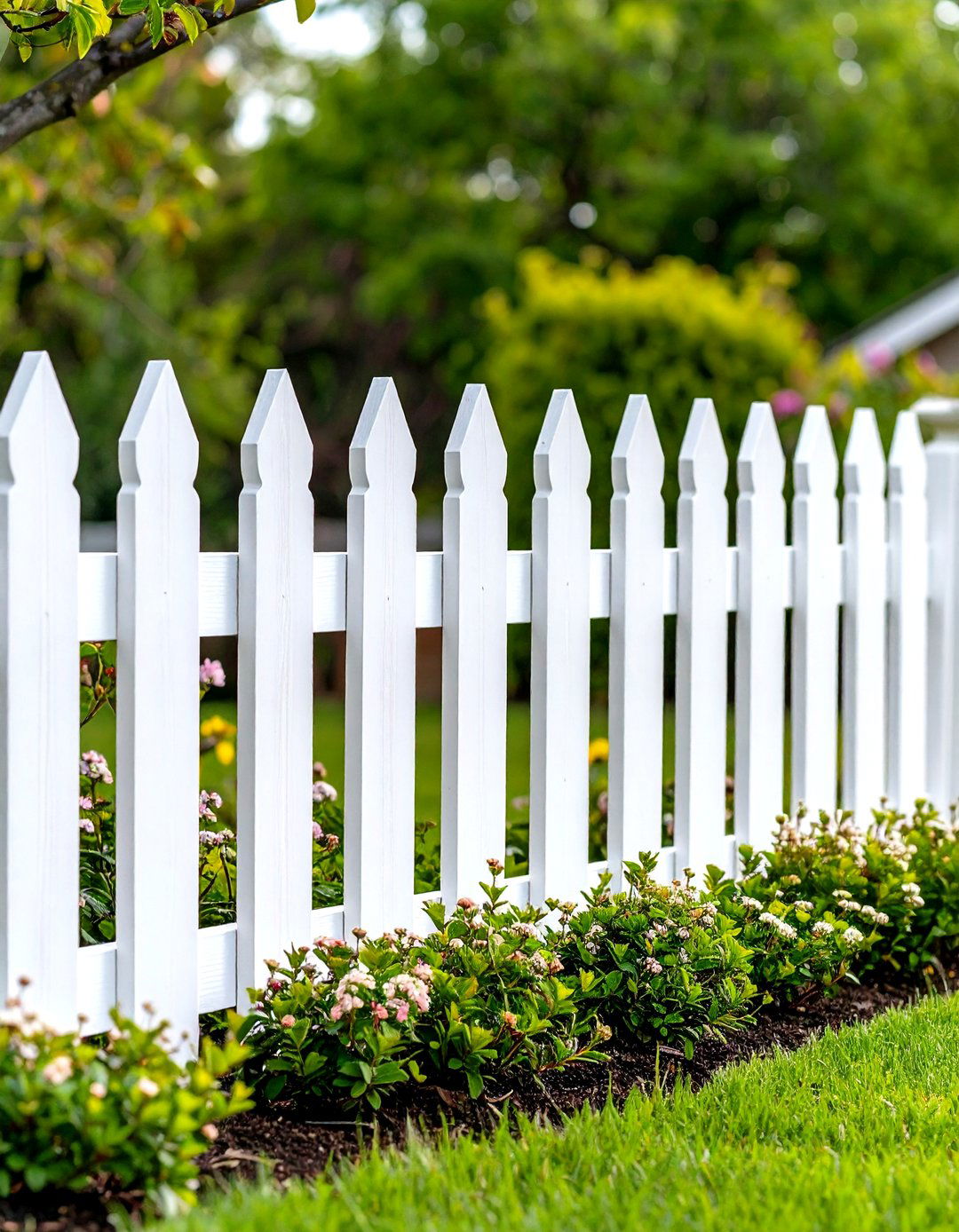
A timeless white-picket front yard fence instantly signals welcome while clearly defining property lines. Modern PVC or powder-coated aluminum versions mimic wood grain but shrug off rot, termites, and repaint cycles, keeping upkeep nearly nil. Space narrow pickets three inches apart to let garden beds breathe and still corral kids and pets. Add low flowering shrubs just inside the rail to soften the straight lines and layer in seasonal color. If you crave a twist, paint the pickets a muted sage or charcoal—contemporary palettes that Better Homes & Gardens says boost resale without sacrificing the archetypal silhouette.
2. Horizontal-Slat Front Yard Fence
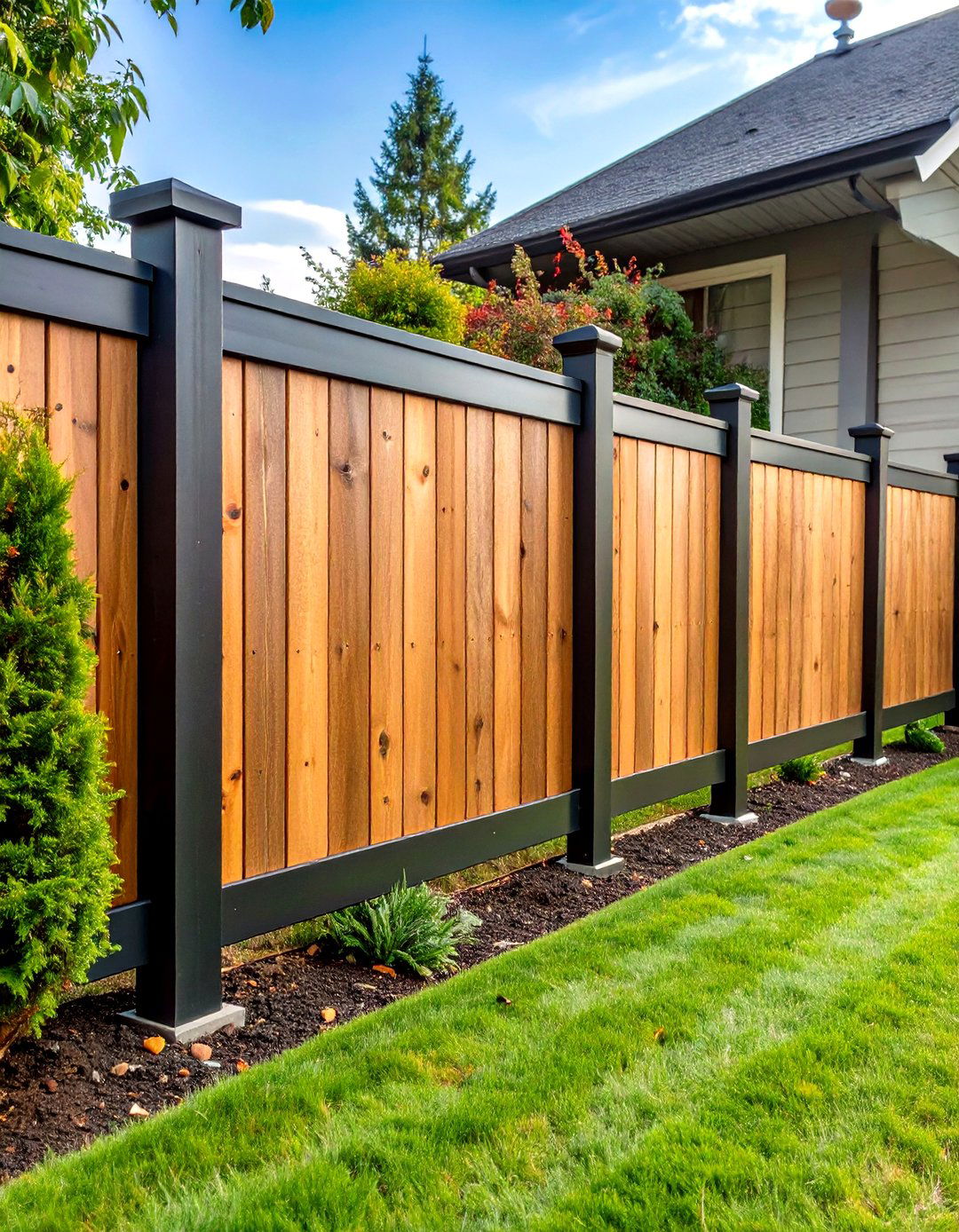
Unlike upright boards, a horizontal-slat front yard fence stretches sightlines, making a small lot feel wider. Choose kiln-dried cedar or composite boards paired with black steel posts for a sleek, low-maintenance profile that hides fasteners. Stagger slat widths (e.g., 1×3-inch alternating with 1×5-inch) to create subtle texture; a ¼-inch gap maintains airflow while preserving privacy. For extra polish, run a hidden LED strip under the top rail so the fence glows after dusk—an easy upgrade with today’s plug-and-play low-voltage kits. Finish with a matte UV sealant so the boards mellow gracefully instead of graying out unevenly.
3. Wrought-Iron Front Yard Fence
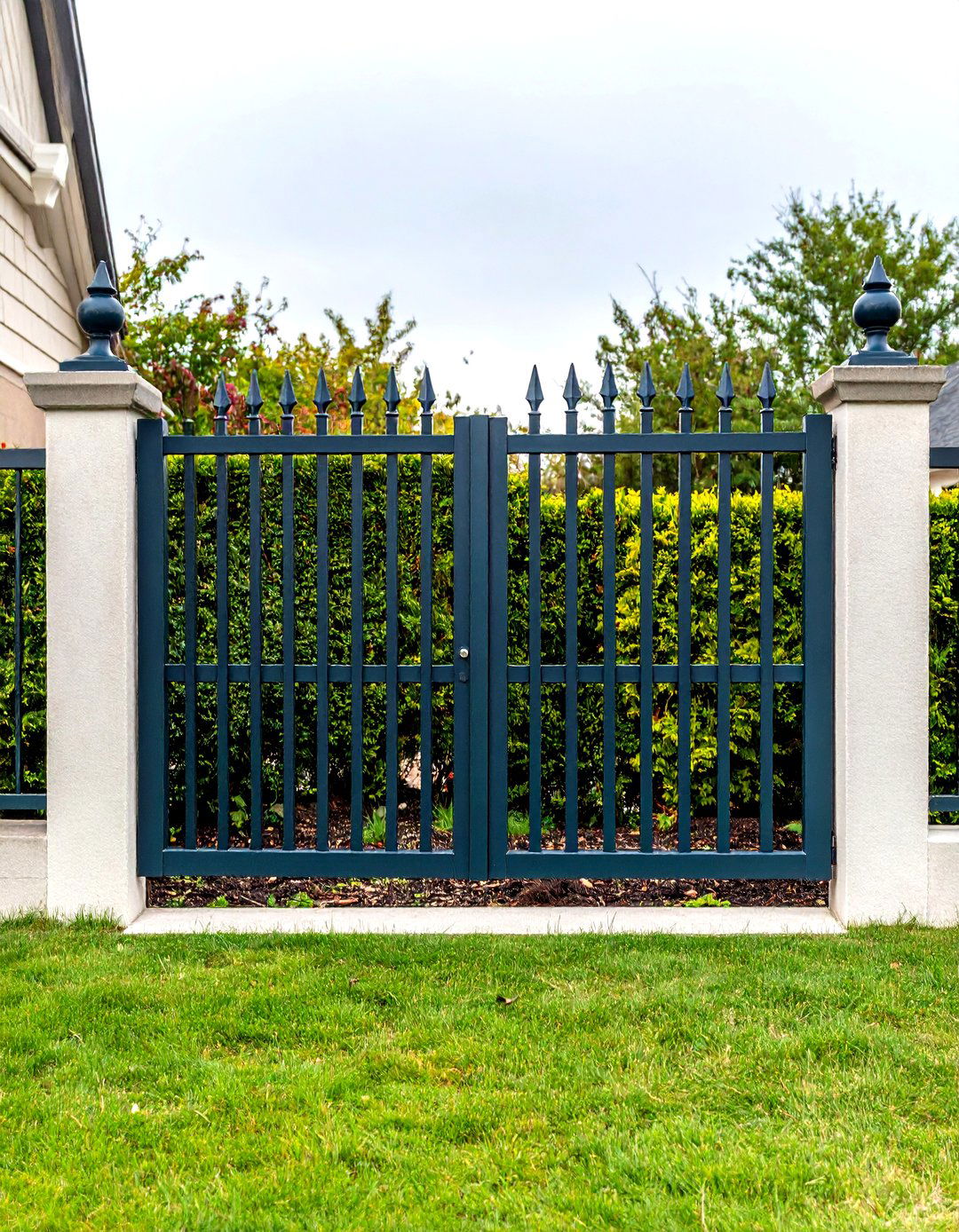
Few boundaries feel as stately as a wrought-iron front yard fence. Modern powder-coated steel or aluminum replicas deliver the same slim bars and graceful finials at a fraction of old-world weight and rust risk. Because iron is see-through, it protects without hiding architectural details—a smart match for heritage façades. Anchor posts in concrete footings below frost depth and finish with a self-closing, self-latching gate for security that meets most pool codes. To deter corrosion, wash yearly with mild soap, spot-prime chips, and top up the protective finish every seven years; maintenance now guards decades of grandeur.
4. Living Hedge Front Yard Fence
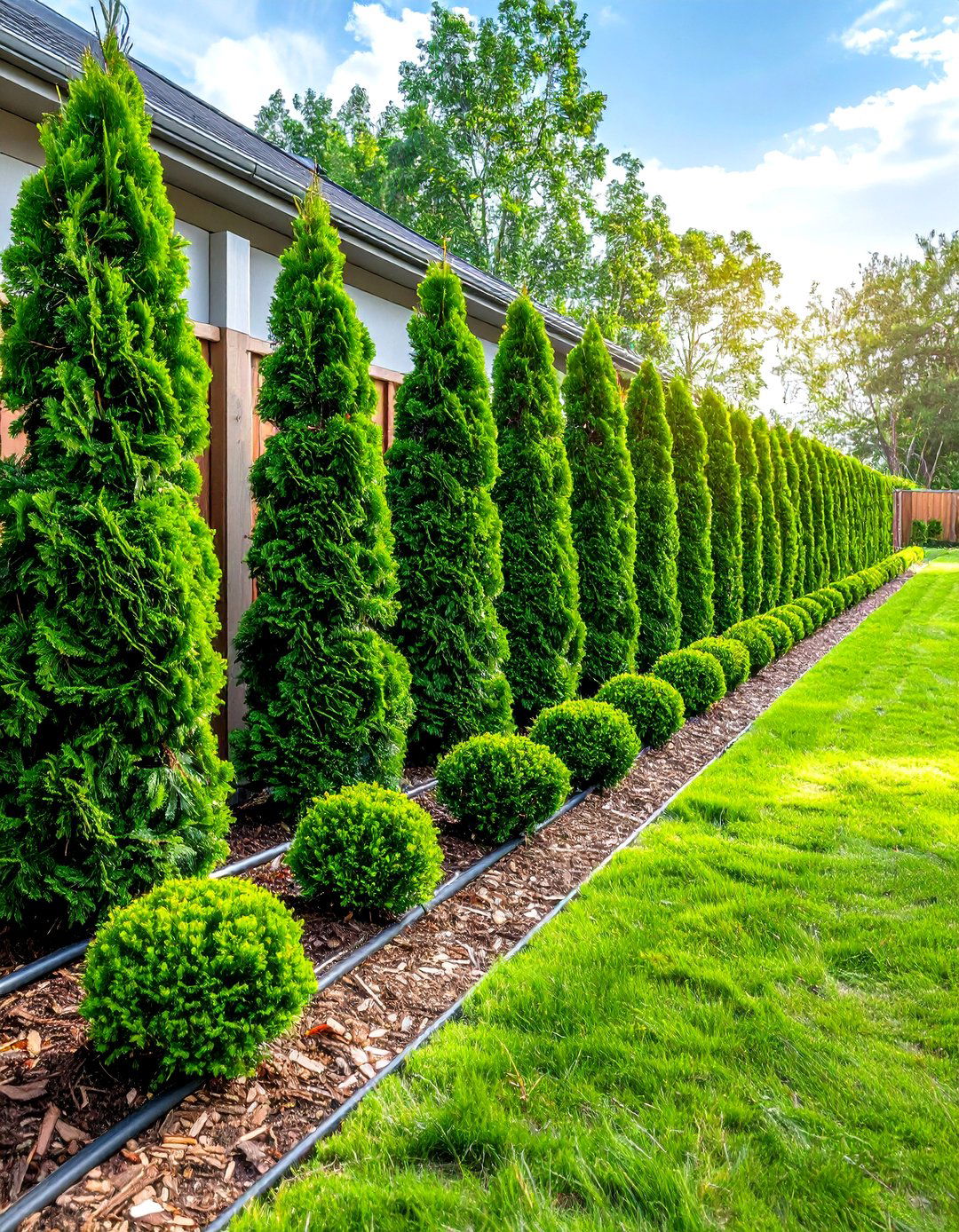
Planting a living hedge as your front yard fence blurs the line between boundary and landscape. Dense evergreens or flowering shrubs grow into a natural screen that filters dust, absorbs traffic noise, and shelters pollinators. Space saplings according to mature spread—often 18–24 inches for boxwood or photinia—to avoid future crowd-out. During the first two years, drip-irrigate weekly and lightly clip the tips to encourage branching; a tapered A-shape ensures sunlight reaches lower foliage. Slip a two-strand wire guide through early rows for straight edges and add mulch underfoot to suppress weeds while roots establish.
5. Eco-Friendly Bamboo Front Yard Fence
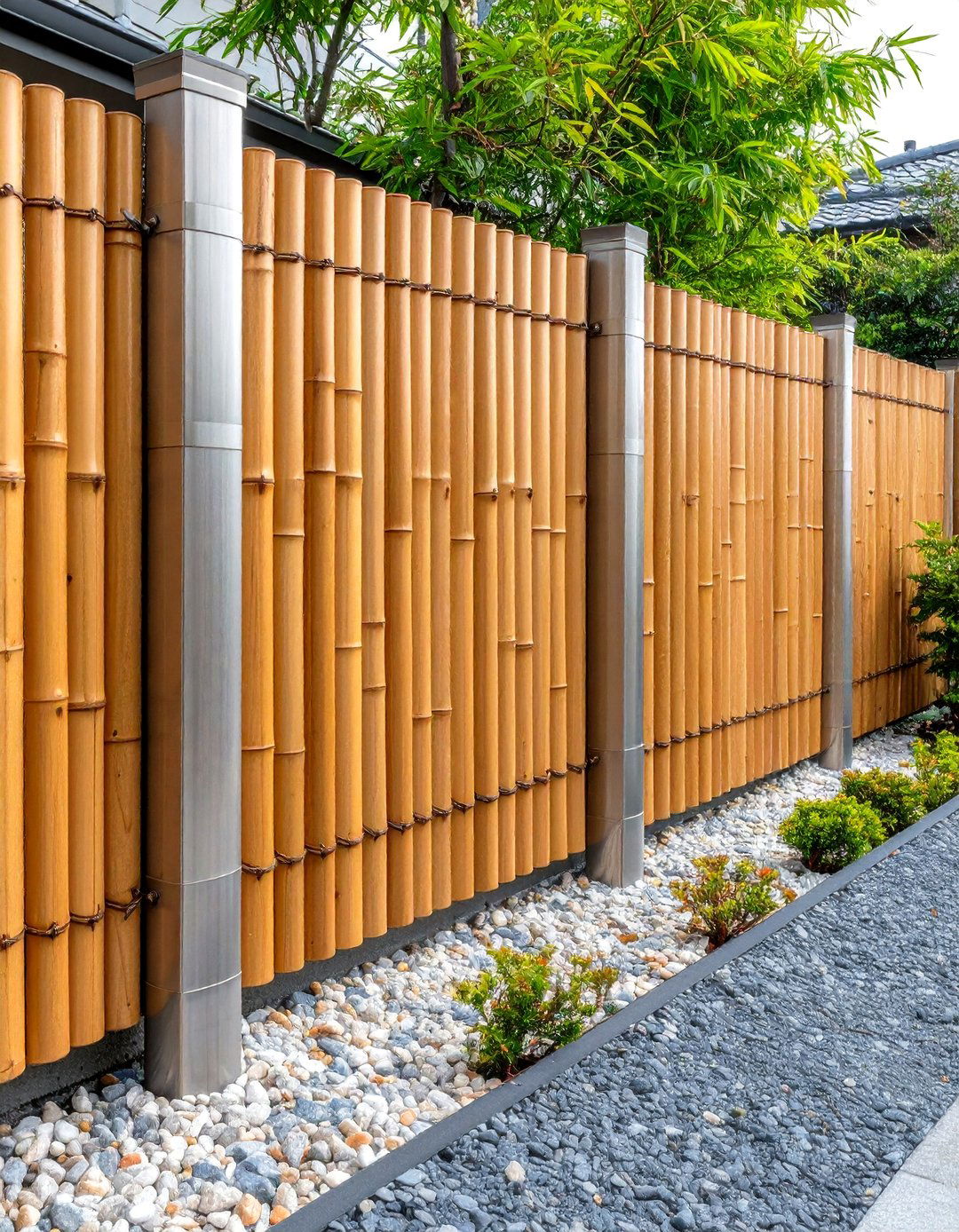
Bamboo grows up to three feet a day, making it a champion renewable resource for fencing. Pre-rolled bamboo panels or engineered bamboo boards lend a warm, tropical vibe while withstanding UV and humidity when sealed with a breathable exterior stain. Mount panels to pressure-treated posts with stainless straps, leaving a half-inch gap at soil level to curb wicking rot. If you prefer live clumping bamboo, trench in a 24-inch-deep root barrier to prevent escapees. Pair the fence with gravel edging to highlight the vertical canes and to keep mower blades safely distant from the base.
6. Gabion-Stone Front Yard Fence

For dramatic texture, fill welded-wire cages with river rock or recycled concrete chunks to craft a gabion front yard fence. The heavy mass dampens street noise and doubles as a retaining wall on sloped sites. Stack baskets no higher than four feet without engineering, and line the street-facing face with flatter stones for a tidy look. Tuck trailing plants like creeping thyme into top crevices to soften the industrial grid. Because cages are modular, you can curve them around drive entries or integrate mailboxes and lighting without specialized fabrication—just order smaller cells and vary the infill pattern.
7. Composite-Vinyl Front Yard Fence
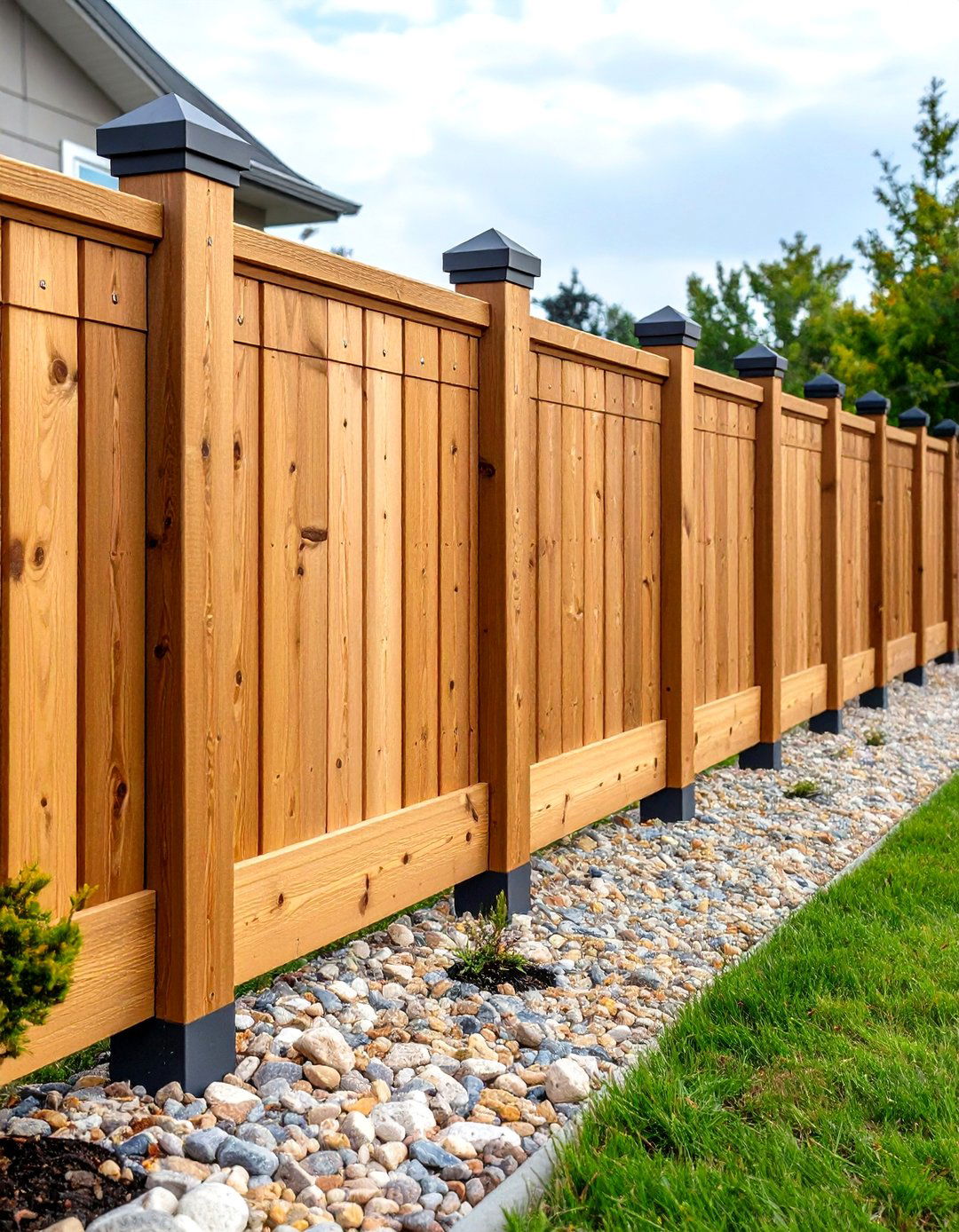
Composite and vinyl front yard fences mix recycled wood fibers or pure PVC with UV inhibitors for a fade-resistant shell that never needs stain. Panels click into routed posts, hiding screws and speeding weekend installs. Expect wind ratings up to 110 mph when posts sink 30 inches into gravel-backed concrete. Choose embossed wood-grain planks in muted earth tones for a softer look than bright white vinyl. Periodic spray-downs remove grime; for tough spots, a melamine sponge and diluted dish soap suffice—no harsh bleach or power-wash needed.
8. Smart-Enabled Front Yard Fence

Smart technology turns a front yard fence from passive to proactive. Solar-powered gate motors, app-controlled latches, and motion-sensing downlights integrate seamlessly into wood, metal, or composite frameworks. Opt for Wi-Fi / Bluetooth dual-band controllers so you’re covered if one network drops. Mount conduit inside hollow posts before pouring footings for clean wiring runs. Enable push-notifications whenever the gate opens—handy for deliveries—and supplement with a battery-backed keypad for guests if your phone dies. Annual firmware updates and an occasional soft-reset keep the system secure and glitch-free.
9. Bold Black Front Yard Fence
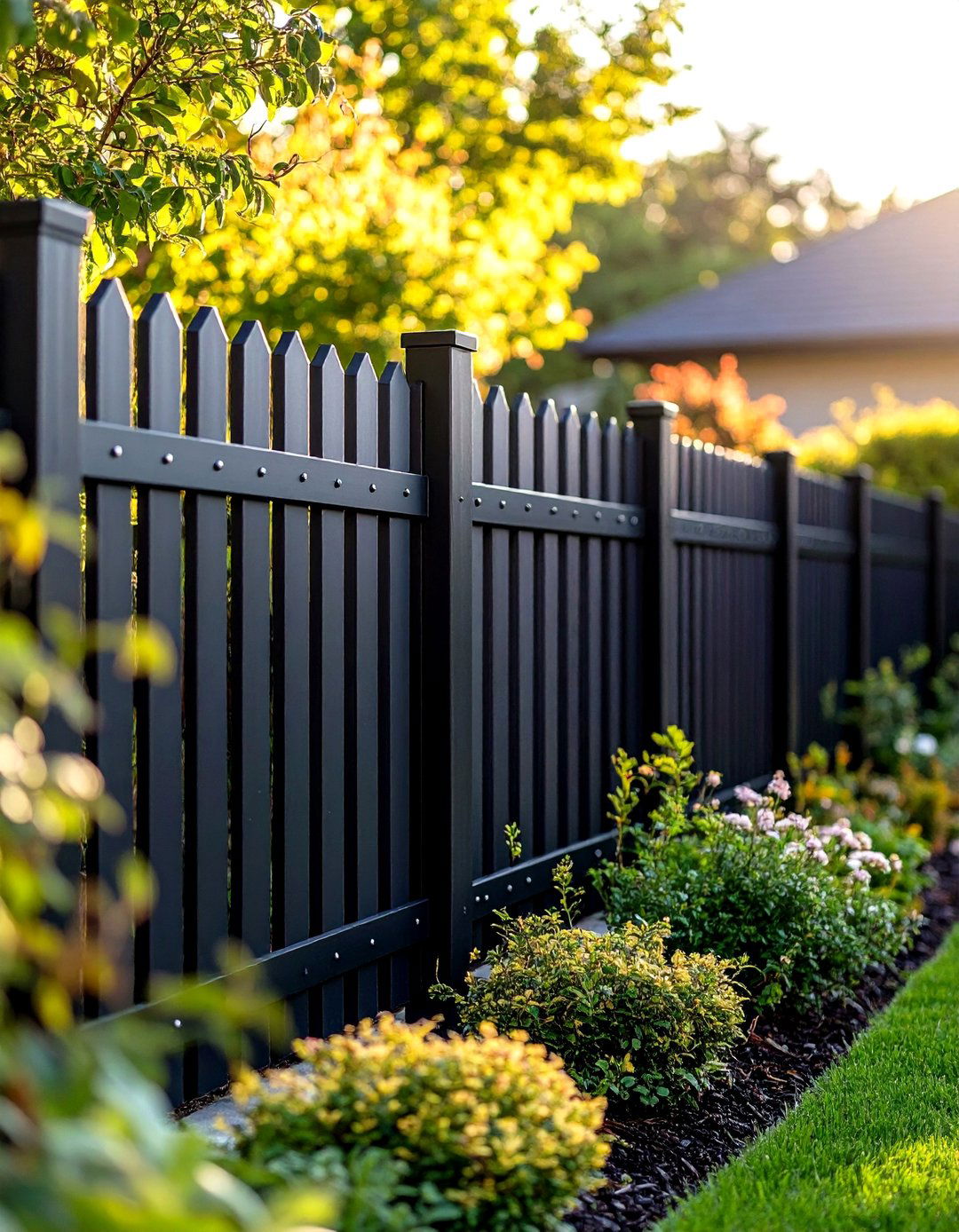
A black-stained or powder-coated front yard fence creates crisp contrast against greenery and hides dirt better than lighter hues. Use water-based exterior stains on cedar to avoid peeling, or choose pre-finished matte-black aluminum for instant, maintenance-light drama. Pair the dark fence with warm-toned landscaping—think golden grasses and flowering sages—to prevent a stark feel. Because dark colors absorb heat, leave a quarter-inch expansion gap between horizontal boards and opt for stainless or coated fasteners to combat thermal movement. Re-tone high-sun areas every five years to keep the color saturated.
10. Pergola-Top Privacy Front Yard Fence

Adding a pergola cap to a six-foot privacy fence visually lifts the height without triggering many height-limit codes, thanks to its open trellis structure. Mount 2×6 rafters atop sturdy 6×6 posts and space 2×2 purlins six inches apart to welcome climbing roses or jasmine. The leafy canopy shades the sidewalk while perfuming summer evenings. For strength, notch rafters into support posts and secure with corrosion-resistant lag bolts hidden by decorative plugs. A mid-span knee-brace stiffens longer pergola sections against wind sway.
11. Mixed Metal-and-Wood Front Yard Fence
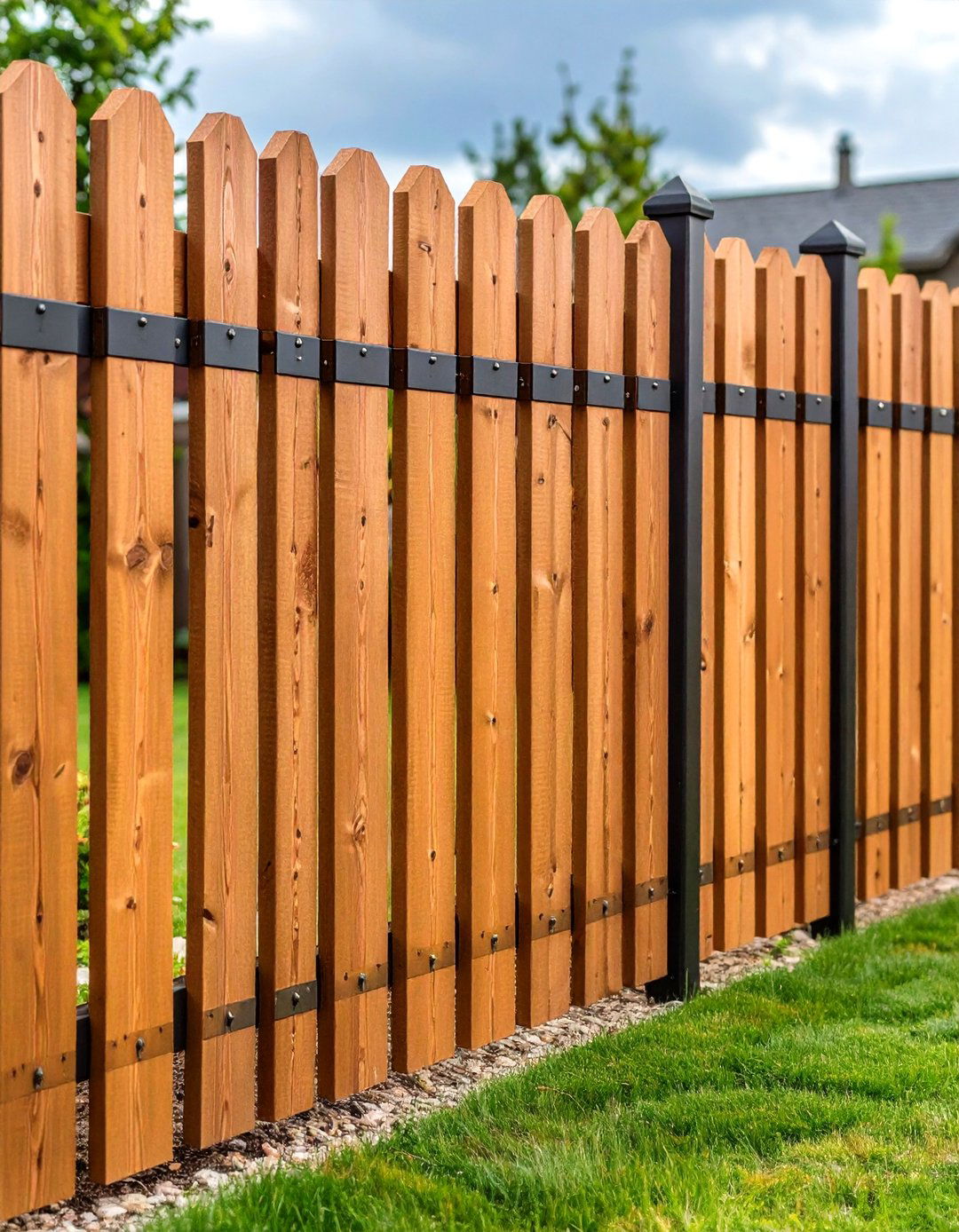
Combining warm cedar boards with thin steel channels yields a mixed-material front yard fence that feels both natural and industrial. Rip 1×4 boards to random widths, slide them into pre-routed steel slotted posts, and seal edges with exterior oil to sustain tone. The metal spine resists warping, letting you use narrower footings than an all-wood build. Alternate board depths to cast playful shadows, and finish with a matching steel mailbox or house-number plaque for cohesion. Because only boards need periodic oiling, upkeep stays manageable.
12. Rustic Split-Rail Front Yard Fence
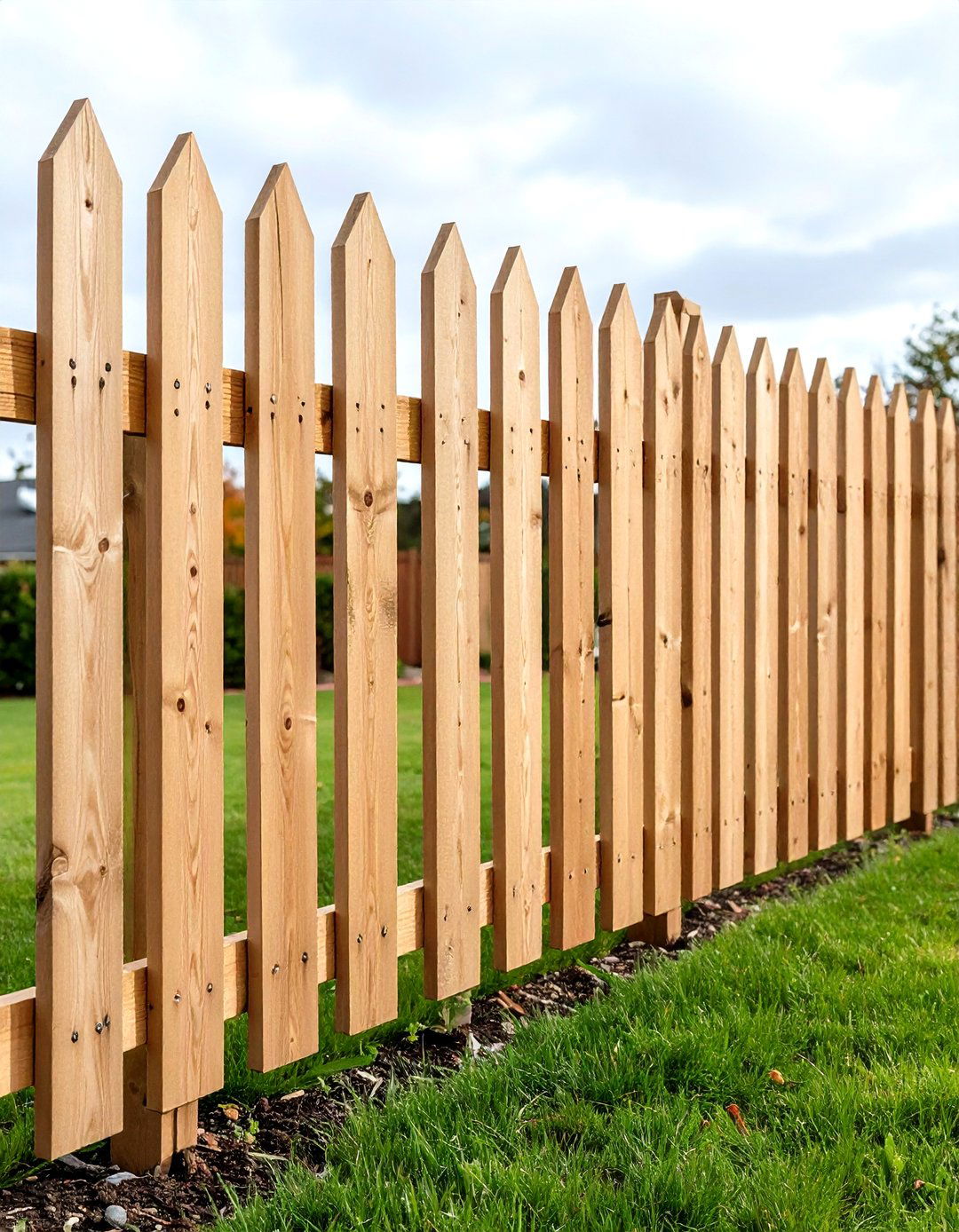
A split-rail front yard fence is cost-effective, easy to install, and perfect for acreage where you want definition without visual bulk. untreated cedar or locust rails interlock in mortised posts—no nails needed—so sections flex with frost heave rather than crack. Set posts 10 feet apart for the classic zigzag pattern or straight-line runs, and slope the rail top slightly to shed rain. Annual inspections to replace any rail with punky ends keep livestock—or rambunctious toddlers—safely within bounds while preserving the fence’s rough-hewn charm.
13. Painted-Mural Front Yard Fence

Transform a plain privacy fence into public art by commissioning (or DIY-ing) a weatherproof mural. Outdoor acrylics topped with marine-grade varnish endure UV, and a bold pattern distracts from necessary height while expressing personality. Lightly sand and prime the surface so paint grips evenly, then grid the design or use a projector for accuracy. A narrow planting bed at the base protects artwork from sprinkler overspray. Check local ordinances for signage restrictions—most consider noncommercial art exempt, but rules vary. Renew varnish every three years to keep colors vibrant.
14. Corten-Steel Front Yard Fence

Weathering-steel panels start gun-metal gray and develop a warm, russet patina that seals out deeper corrosion, making a corten-steel front yard fence virtually maintenance-free after its first year. Space panels ¼-inch apart on steel posts for thermal movement. During the initial rust bloom, divert runoff away from concrete or pavers to avoid staining. Pair the raw metal with ornamental grasses and gravel for a desert-modern look. If you prefer less orange, stop the oxidation early by applying a clear corten-compatible sealer once your ideal shade appears.
15. Reclaimed-Material Front Yard Fence
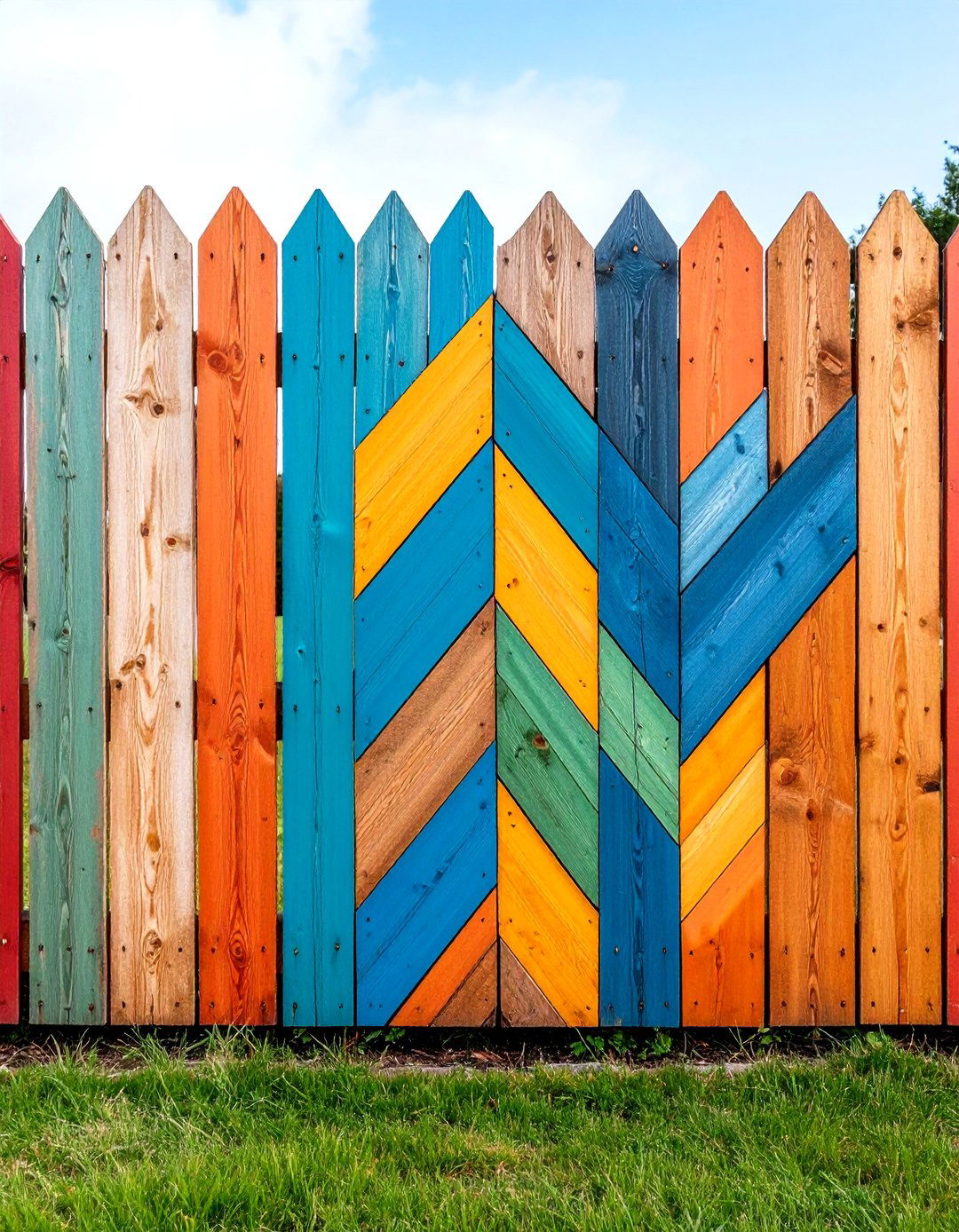
Upcycling salvaged pallets, barn boards, or corrugated metal into a reclaimed-material front yard fence cuts costs and landfill waste simultaneously. Choose boards free of lead paint and treat with borate for pests before assembly. Lay boards in a chevron or alternating-height pattern for intentional design rather than “scrap pile.” Because reclaimed lumber can vary in thickness, pre-drill pilot holes and use adjustable stringers to keep spans true. Finish with a semi-transparent stain that unifies tone while letting historic nail marks and saw-kerfs show through.
16. Acoustic Front Yard Fence

Living near busy roads? Build a solid, gap-free acoustic front yard fence of tongue-and-groove boards, masonry, or composite panels rated 25 kg/m² or more to dampen decibels. Height matters—ideally 1 ½ times taller than the noise source line-of-sight. Add mass-loaded vinyl sheets against the interior for another 3–7 dB of reduction, then layer evergreen shrubs to absorb reflected sound. Cap boards with an angled top rail so rain runs off instead of seeping into seams, preserving the fence’s acoustic integrity over time.
17. Planter-Integrated Front Yard Fence
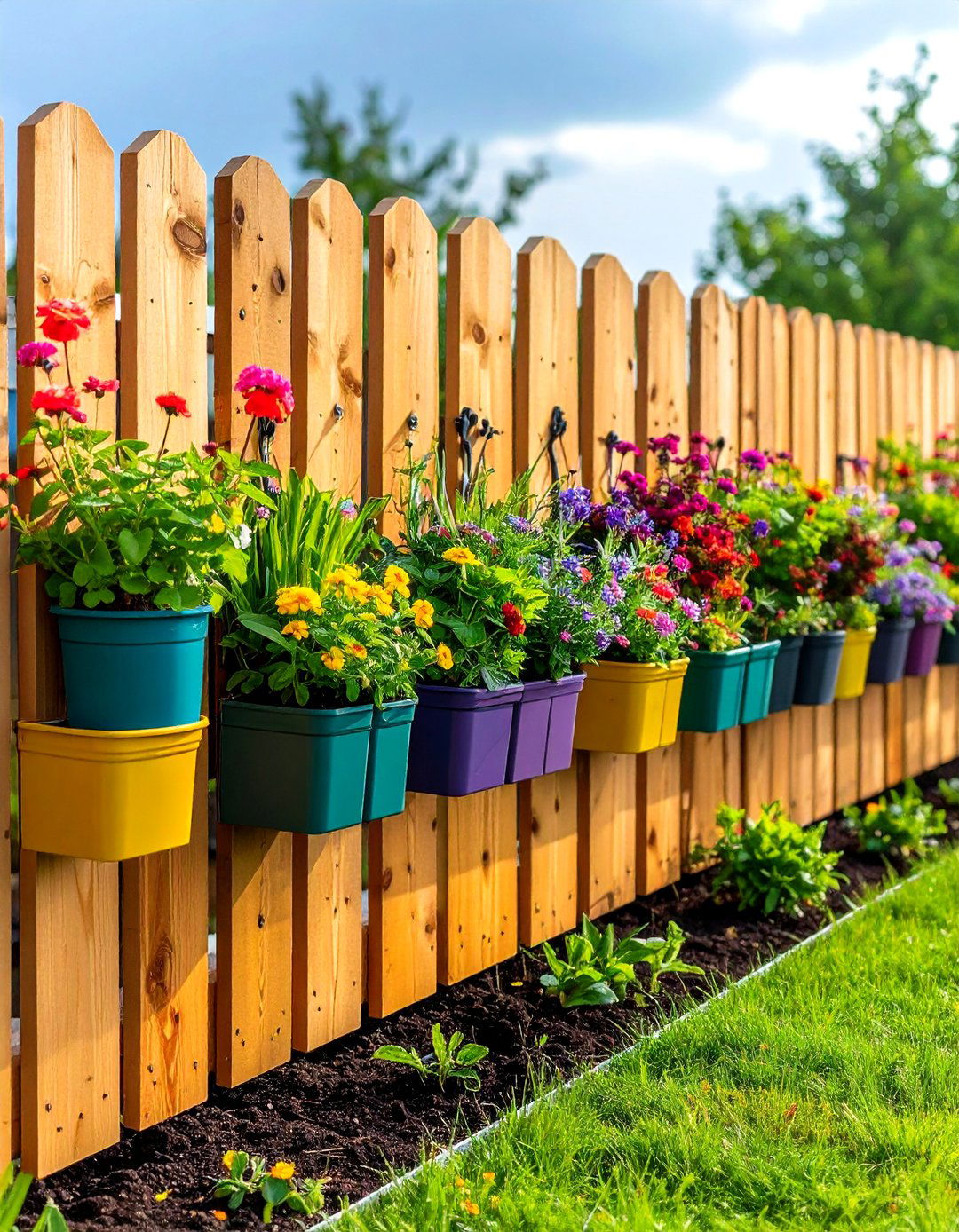
Why stop at privacy when your front yard fence can grow dinner? Boards with cut-out planter boxes or steel-framed pocket planters turn vertical real estate into a living wall for herbs and flowers. Space boxes at least 12 inches apart vertically so plants don’t shade each other, and route drip tubing behind boards to hide irrigation. Use lightweight potting mix and add slow-release fertilizer each season. A French cleat-style hanger lets you lift planters off for re-potting without unscrewing hardware, simplifying seasonal transitions.
18. Stone-Base & Iron-Panel Front Yard Fence

A low stone plinth topped with open iron panels delivers durable security while preserving sightlines. Dry-stack sandstone or brick up to two feet high, cap with a lime-based mortar for drainage, and anchor prefabricated iron frames into hidden post sleeves set within the core. The heavy base shrugs off line-trimmer dings, while the airy metal prevents the facade from feeling fortified. Match the iron’s finish to porch railings for cohesion, and tuck LED uplights at pilaster bases to make texture pop at night.
19. Louvered-Slat Front Yard Fence
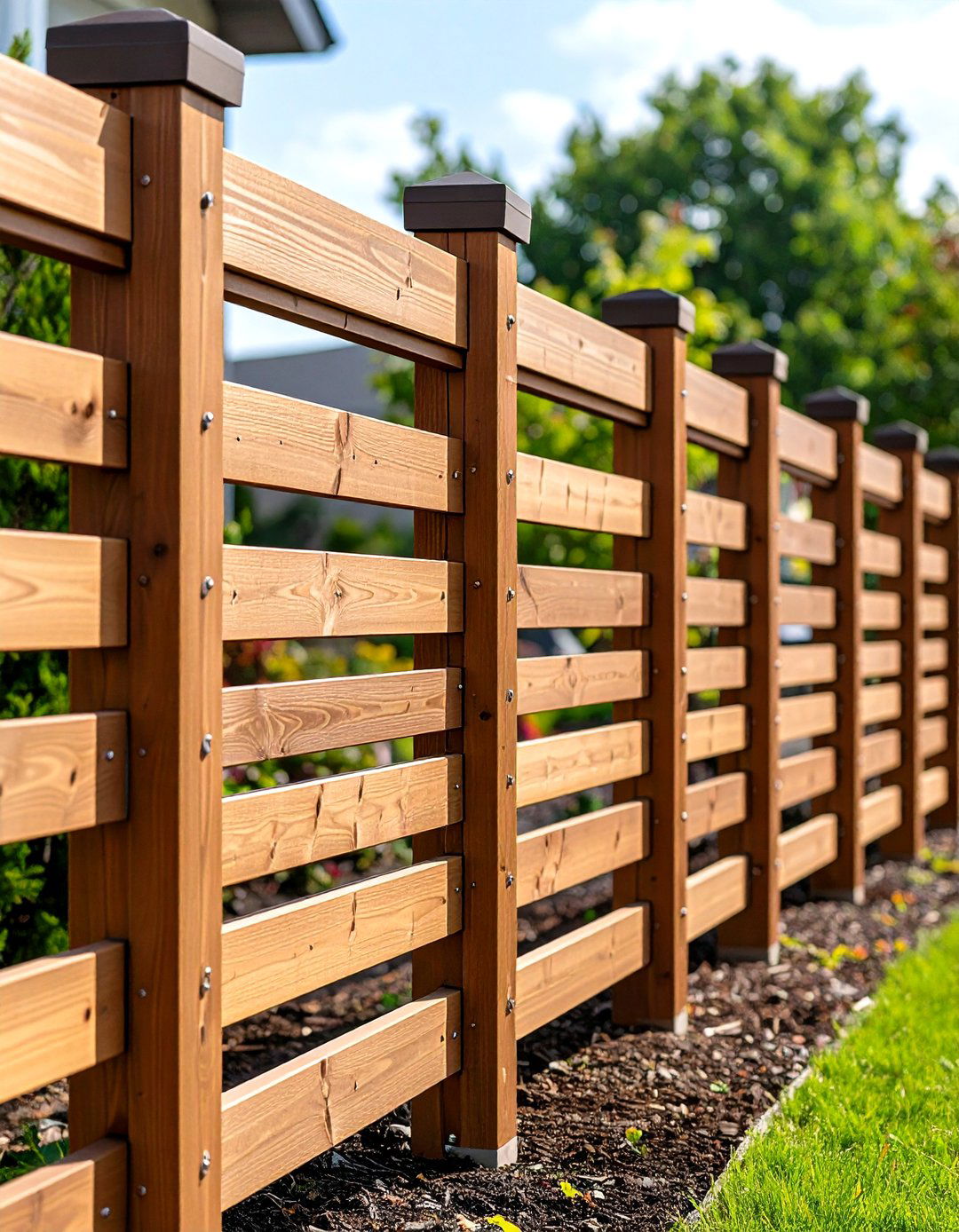
Adjustable louvered slats let you tip blades toward the sky for airflow or down for privacy without losing daylight. FLEXfence-style hardware converts standard 1×6 boards into pivoting panels that bolt to cedar frames. Space louvers 5 ⁄ 8-inch apart for smooth rotation and use stainless pivot pins to avoid black streaks. Because louvers catch wind, bury posts six inches deeper than a solid fence of equal height. A quick annual spray of silicone keeps pivots smooth and squeak-free.
20. Laser-Cut Screen Front Yard Fence
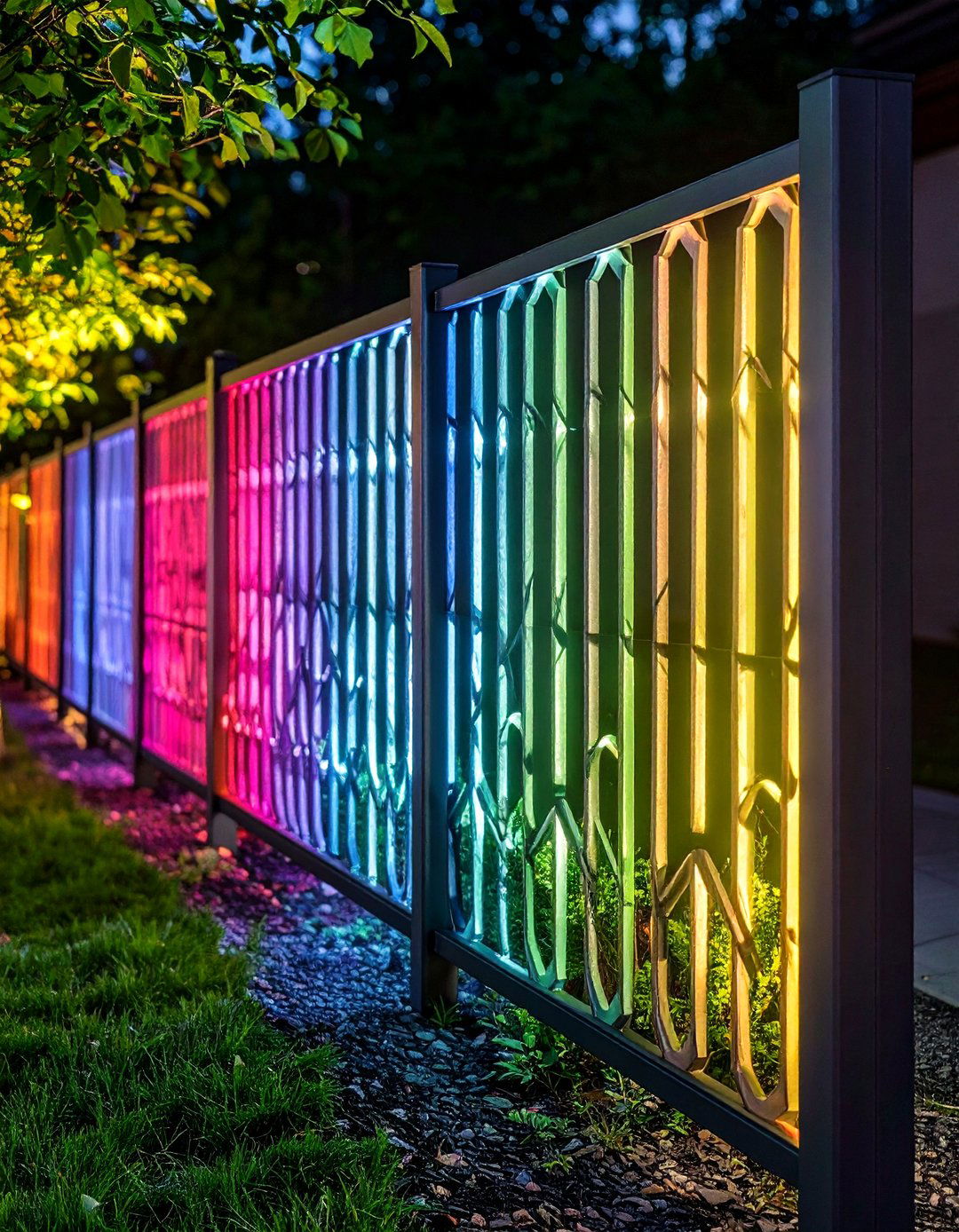
Finally, treat your fence as art with laser-cut metal screens featuring geometric, botanical, or custom family-crest motifs. Powder-coated aluminum panels resist rust and weigh far less than steel, easing DIY installation. Mount screens to a simple steel frame, illuminate from behind with low-voltage strip lights, and watch shadows dance across walkways at dusk. Ensure at least 40 percent open area in the pattern to satisfy many code requirements for wind permeability. For coastal climates, specify marine-grade powder coatings to stave off salt spray.
Conclusion:
Whether you lean timeless with crisp white pickets, bold with patinated corten, or tech-forward with smart gates and louvers, each front yard fence idea here melds curb-appeal with real-world function. Prioritizing material longevity, local climate, and lifestyle needs—noise control, pet safety, edible gardening—helps narrow the perfect fit. Use the insights and pointers above to budget wisely, comply with local ordinances, and craft a boundary as welcoming as the home it protects.


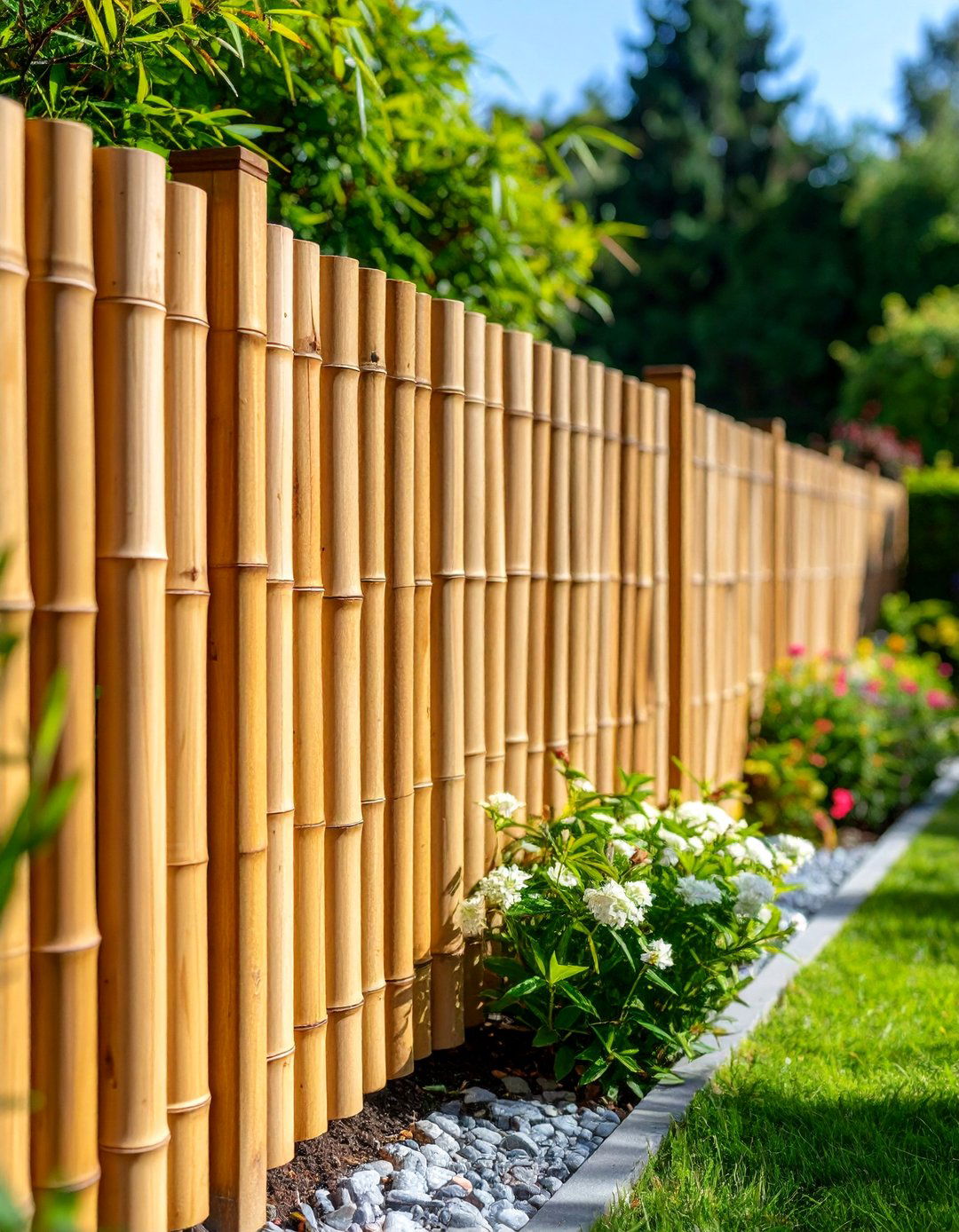
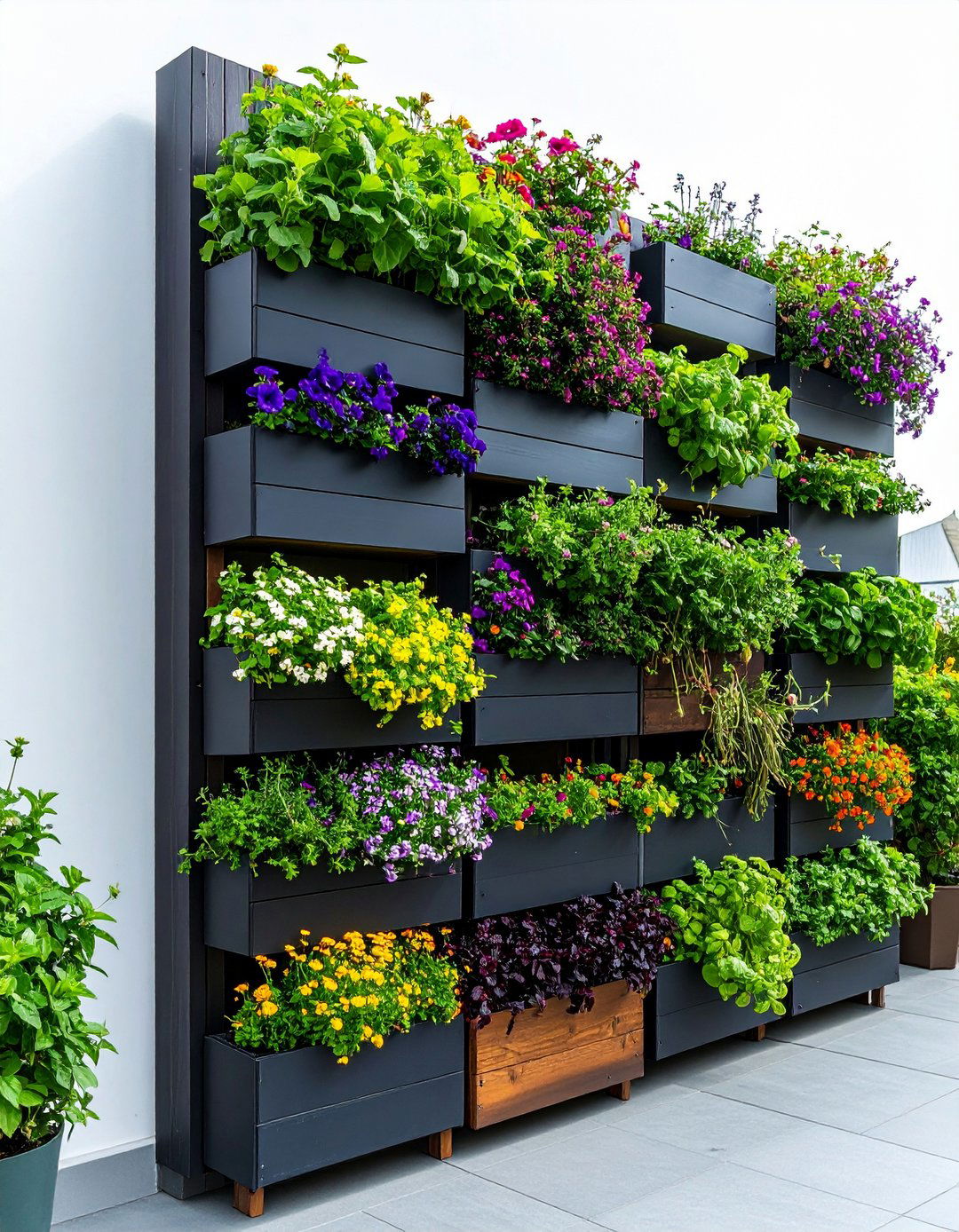
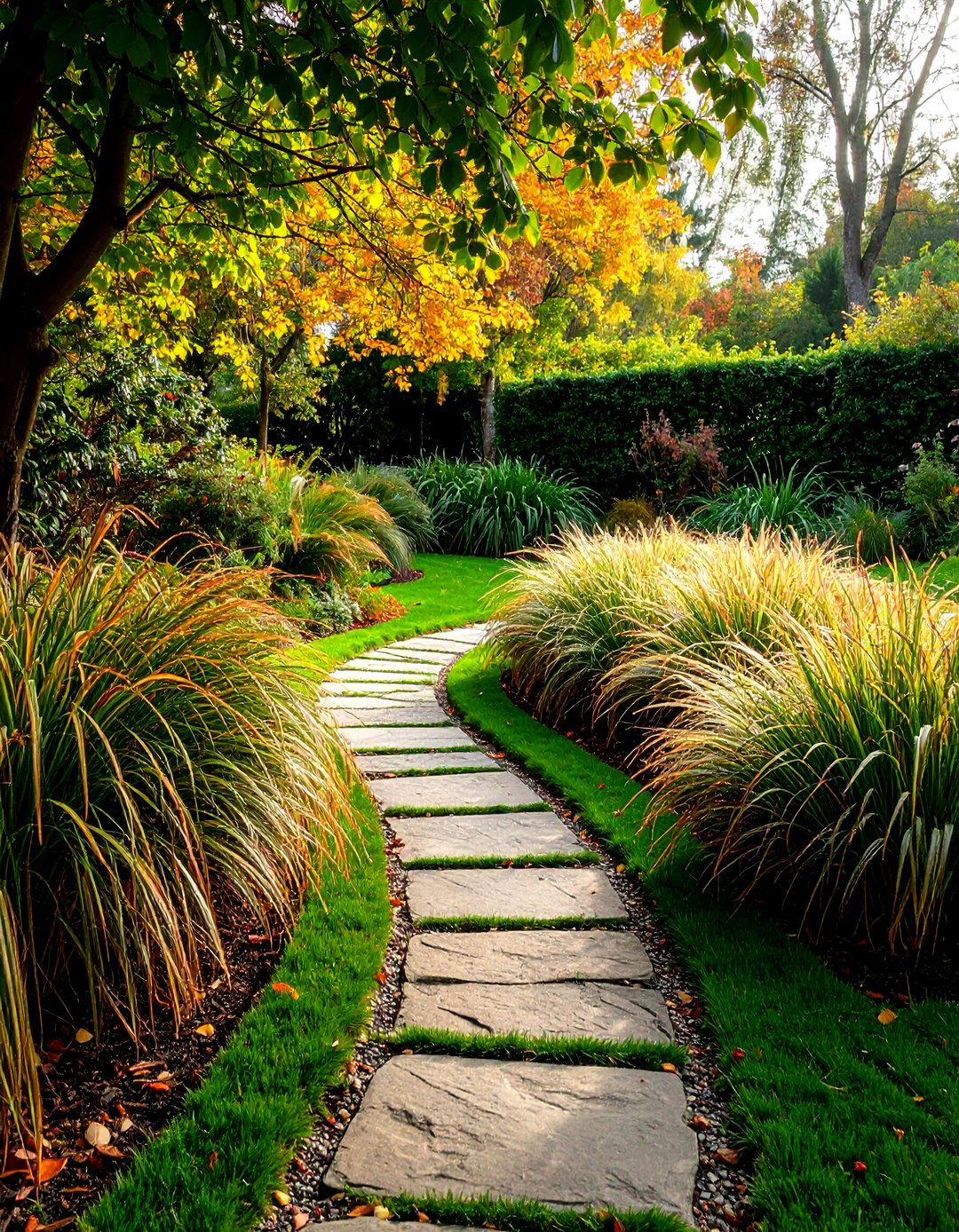
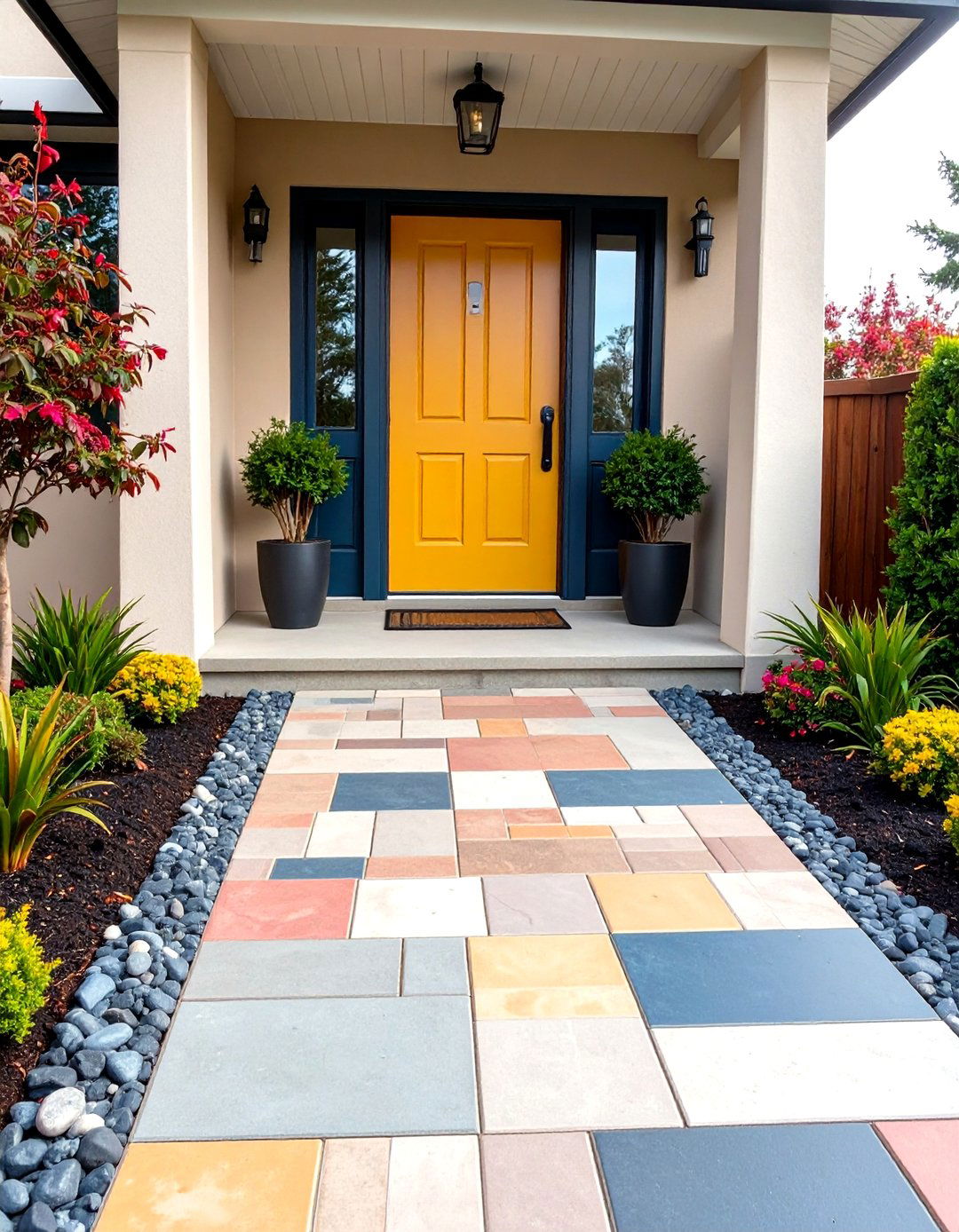
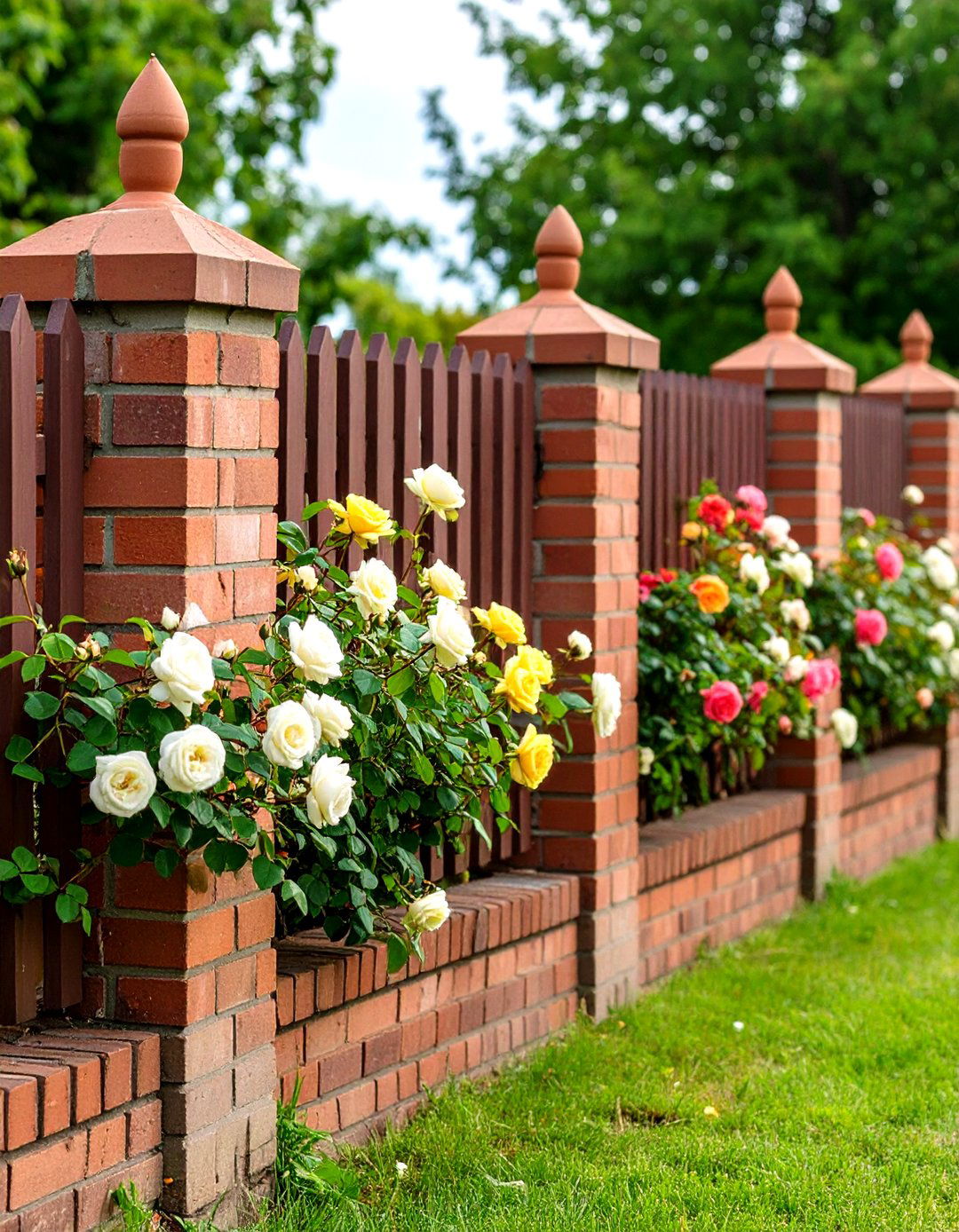
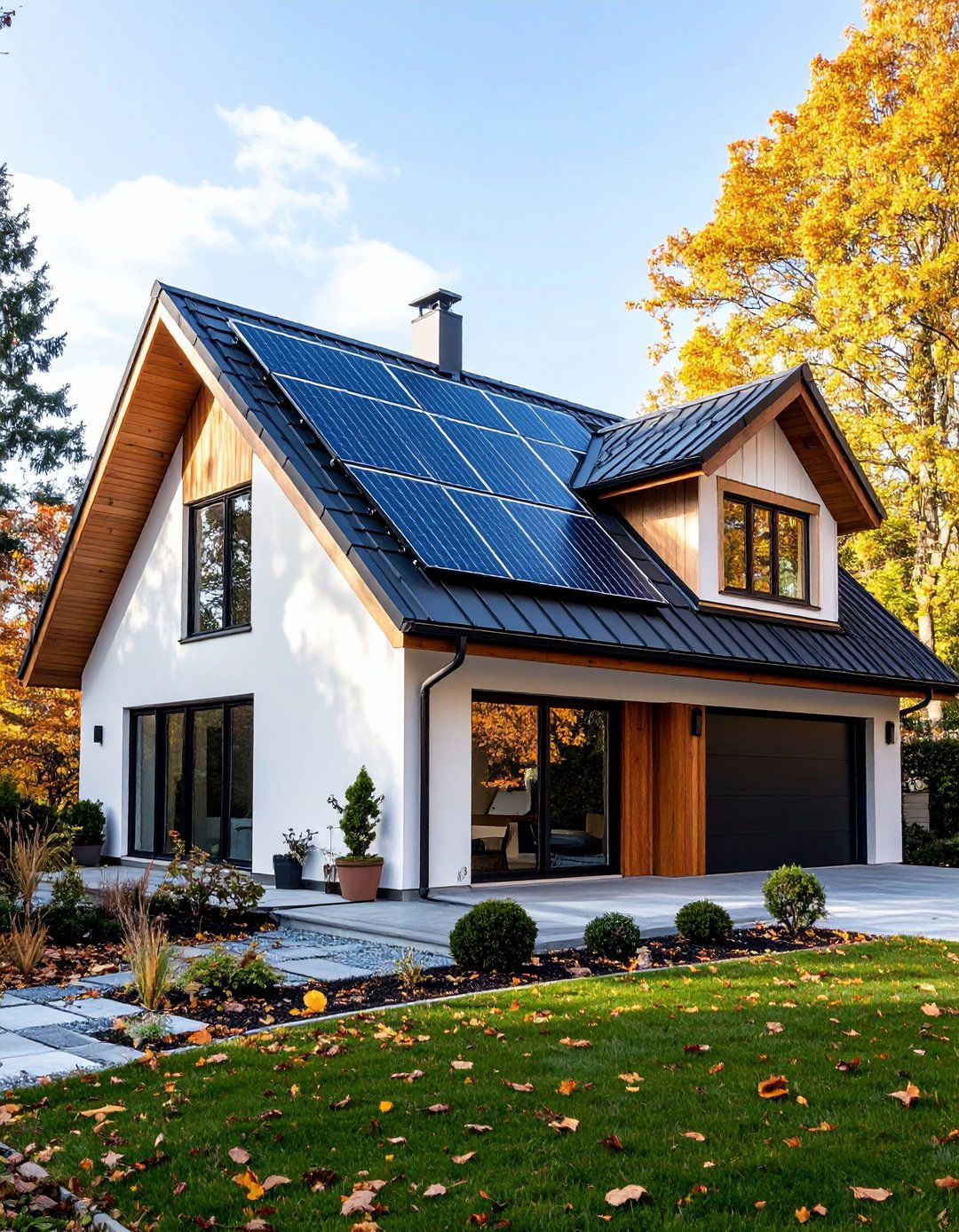
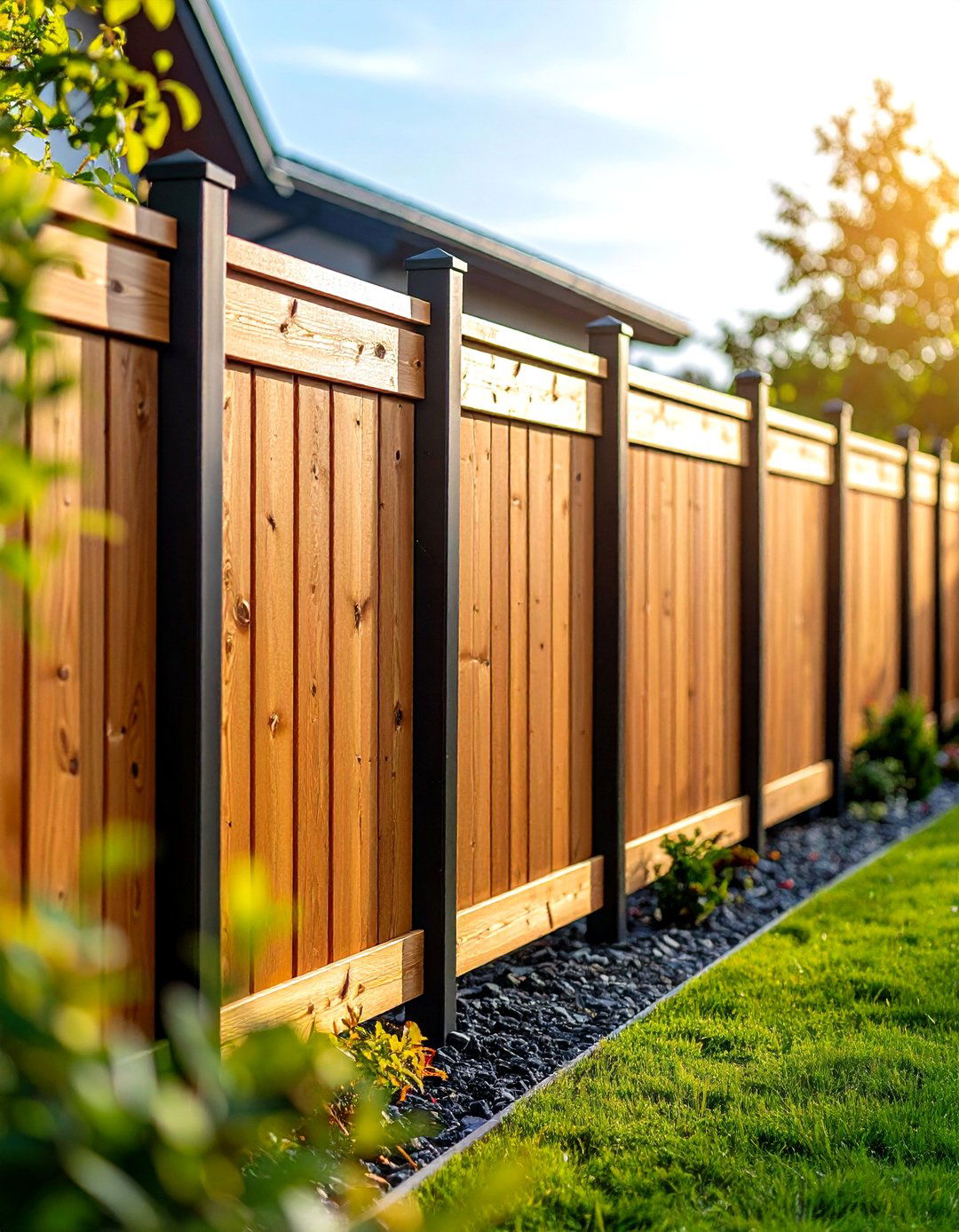
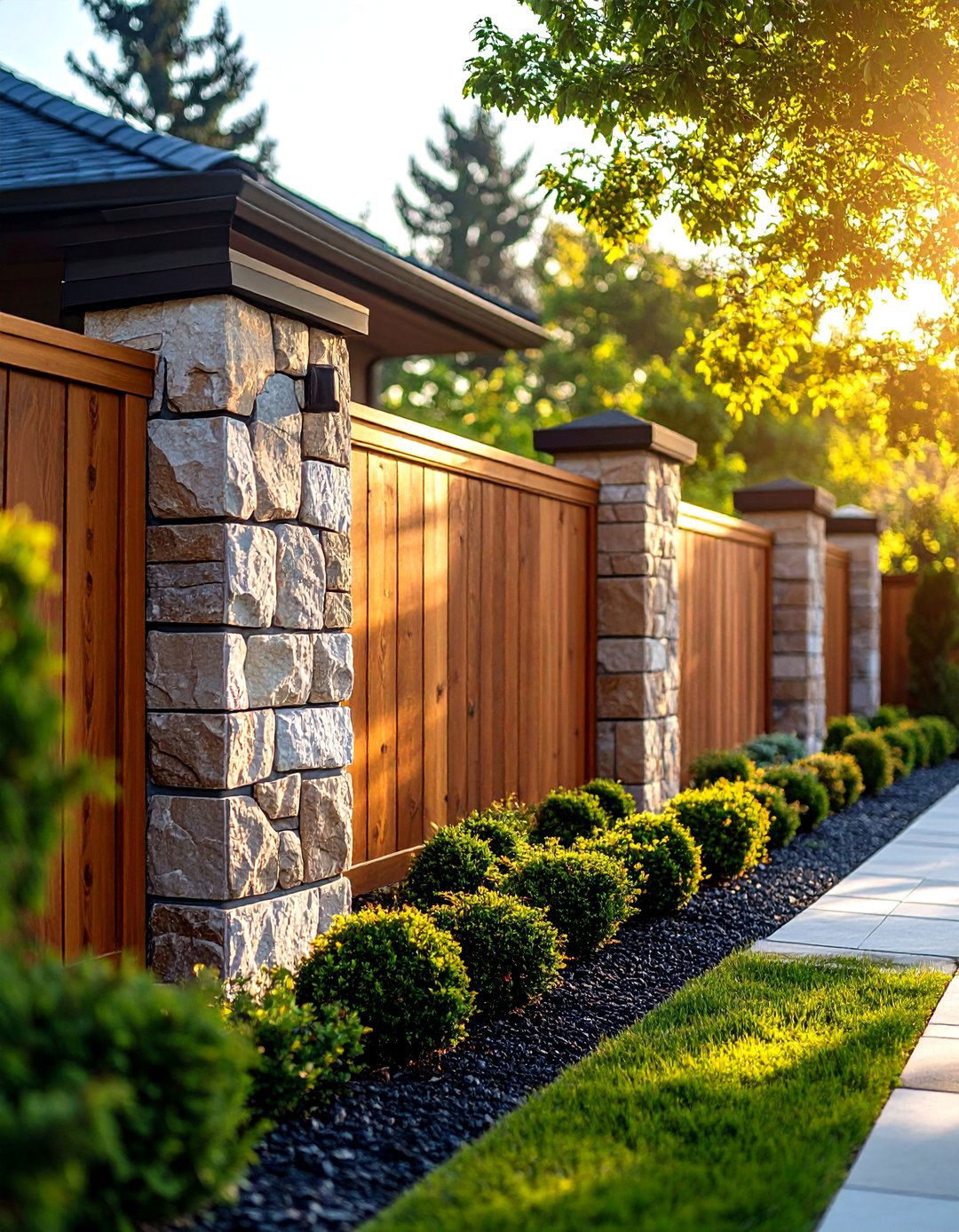
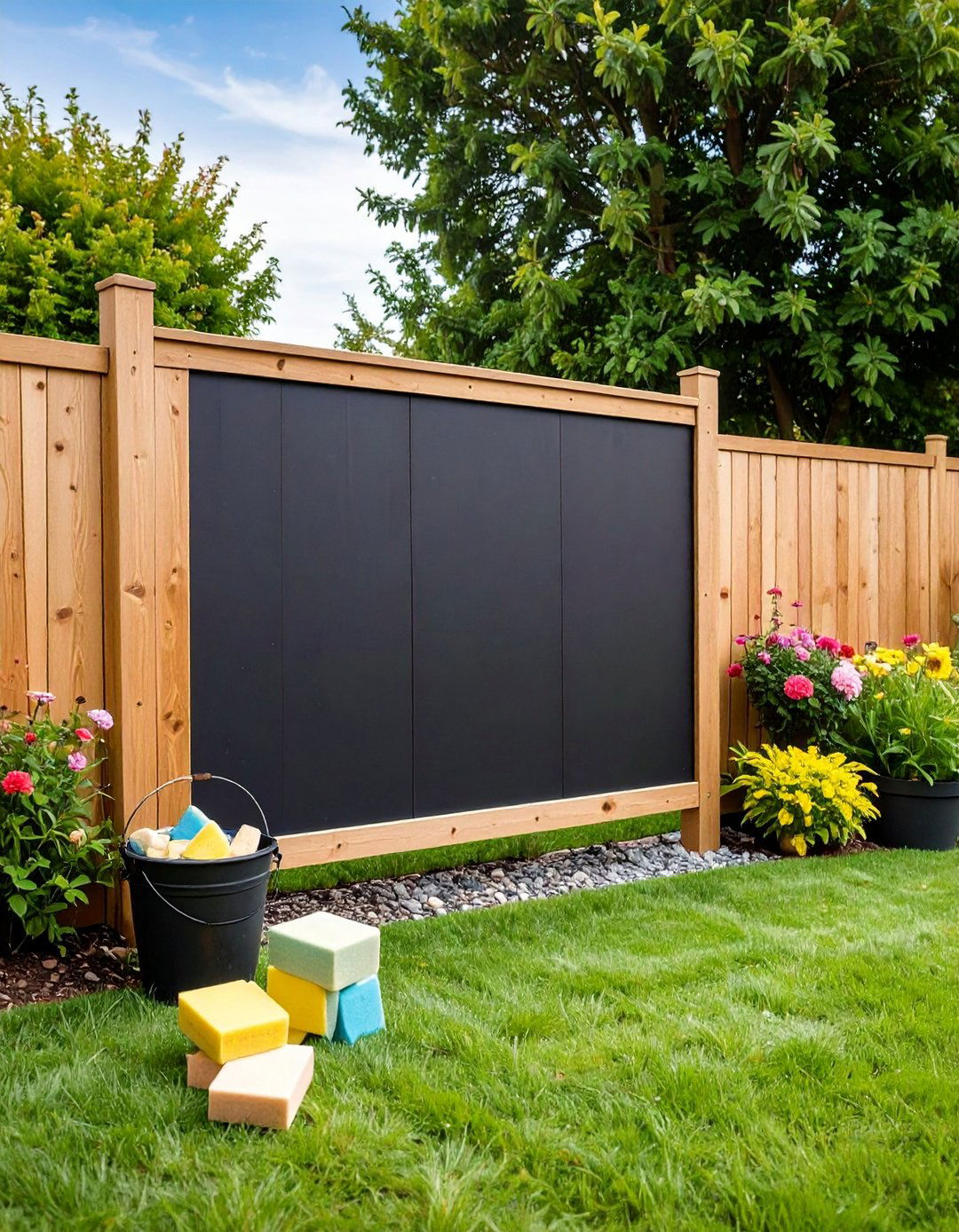

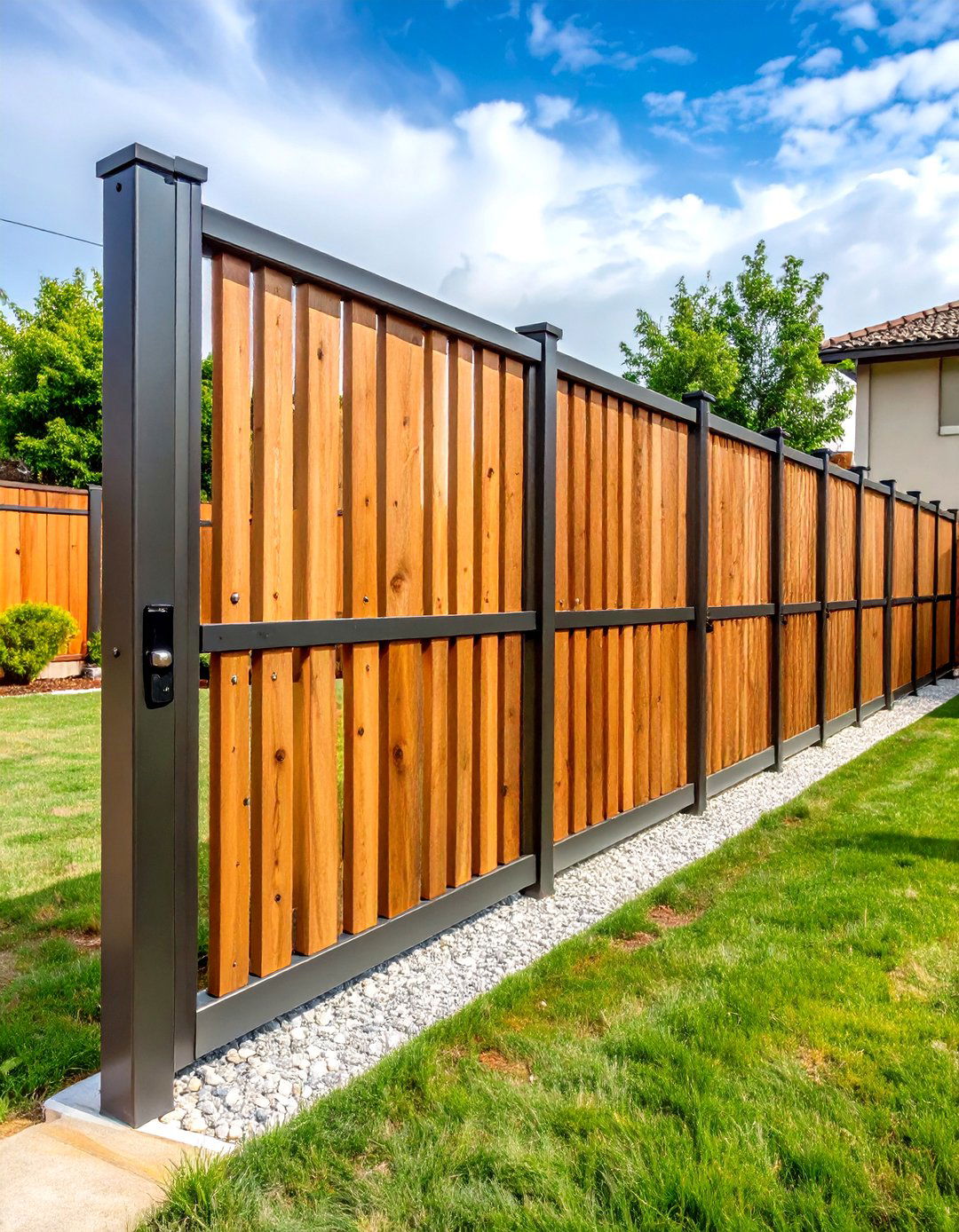
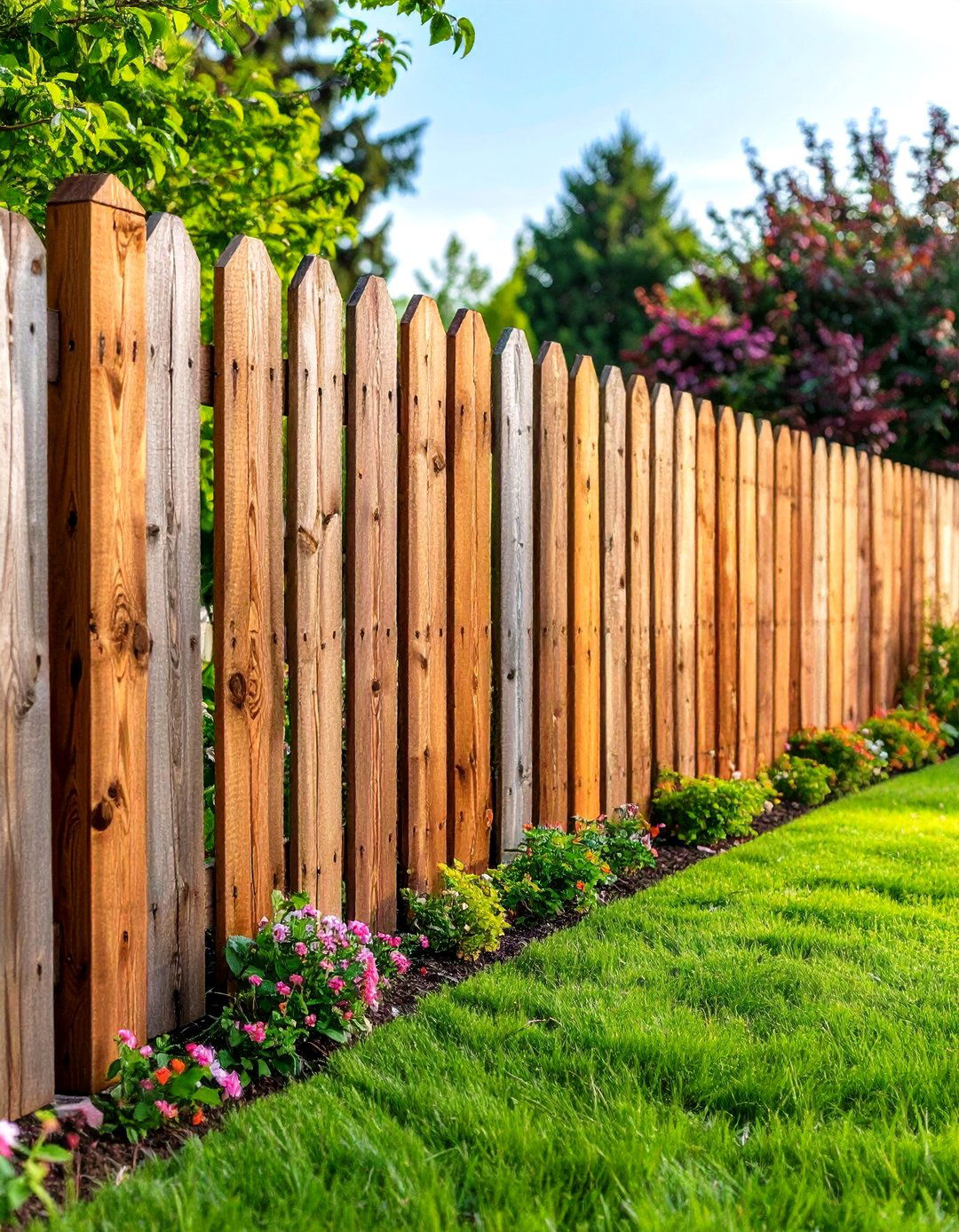
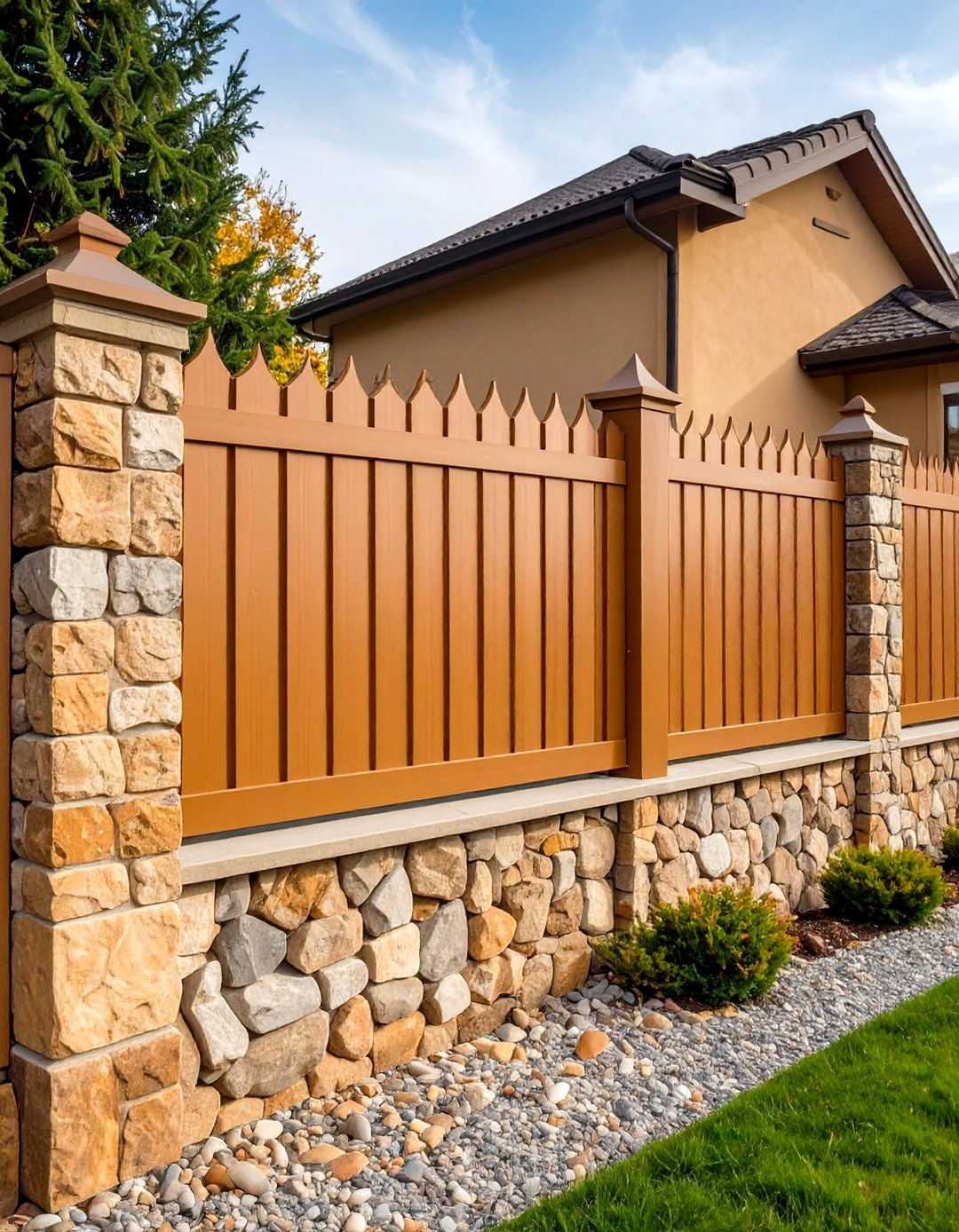
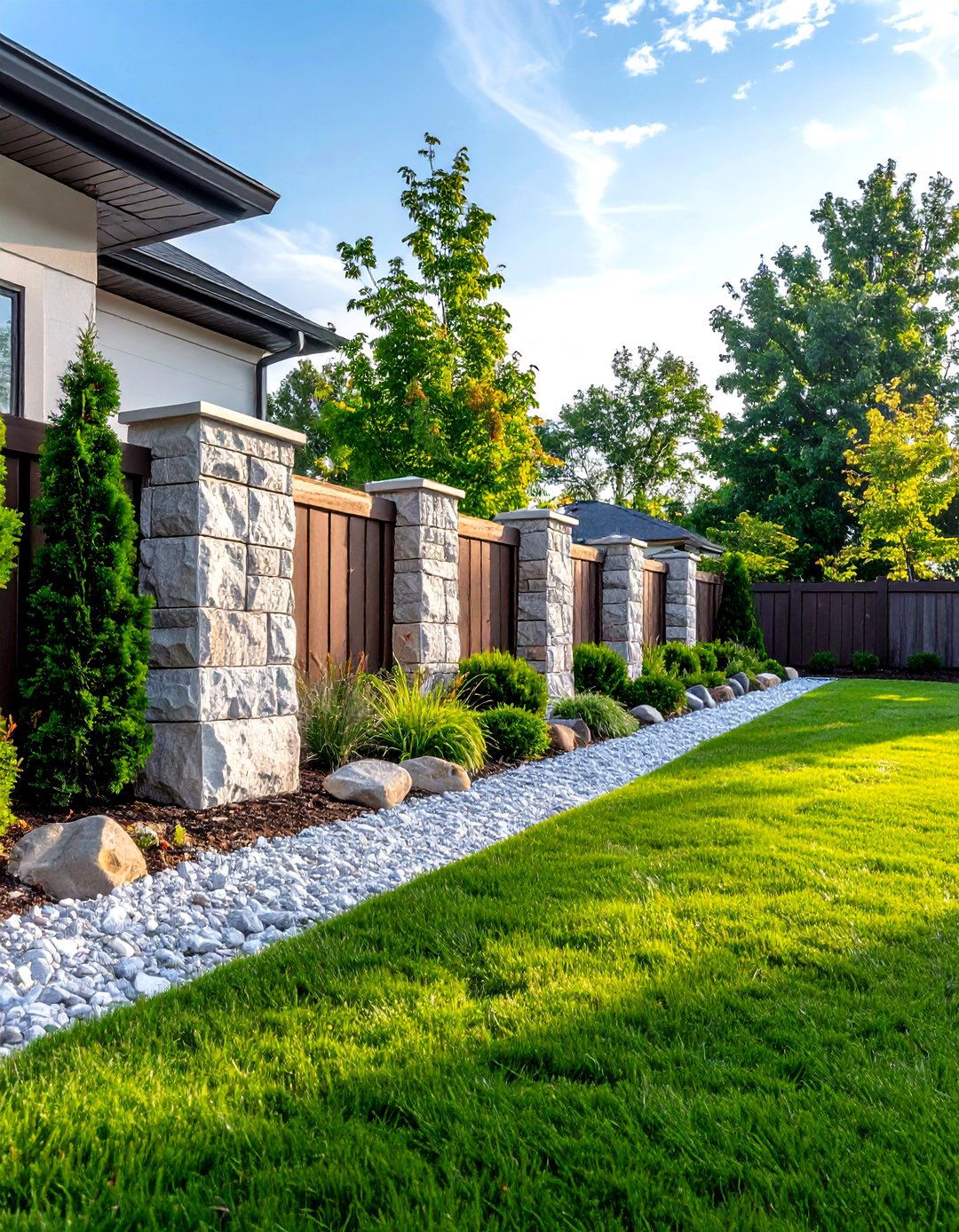
Leave a Reply